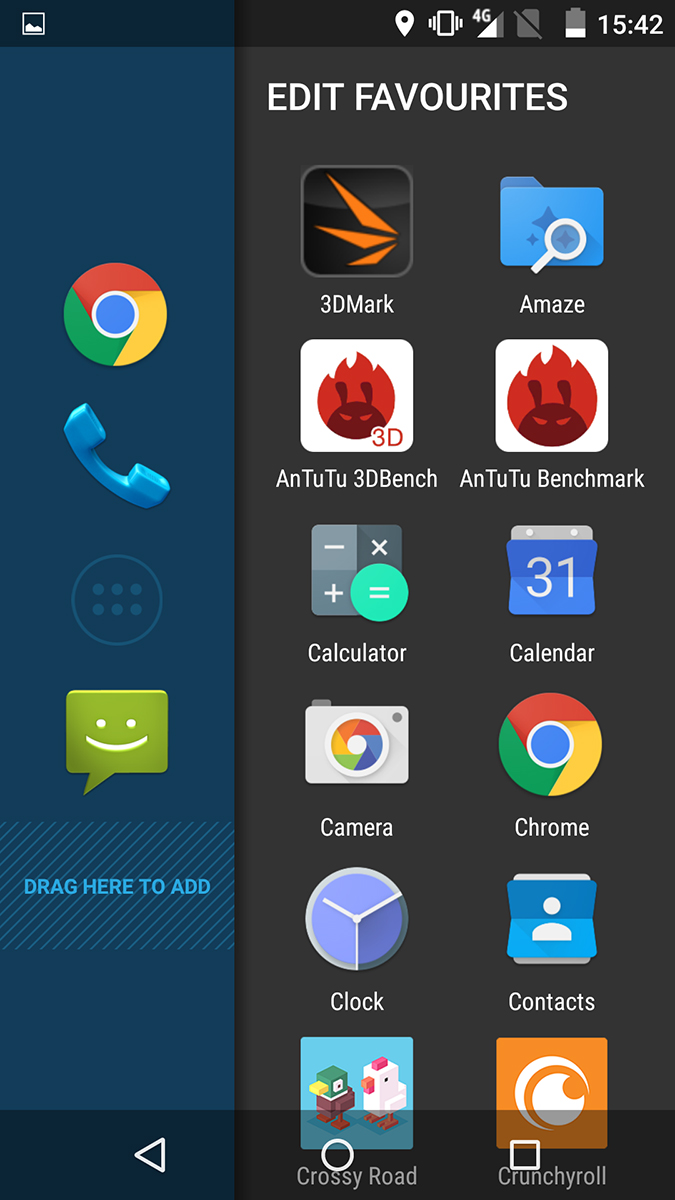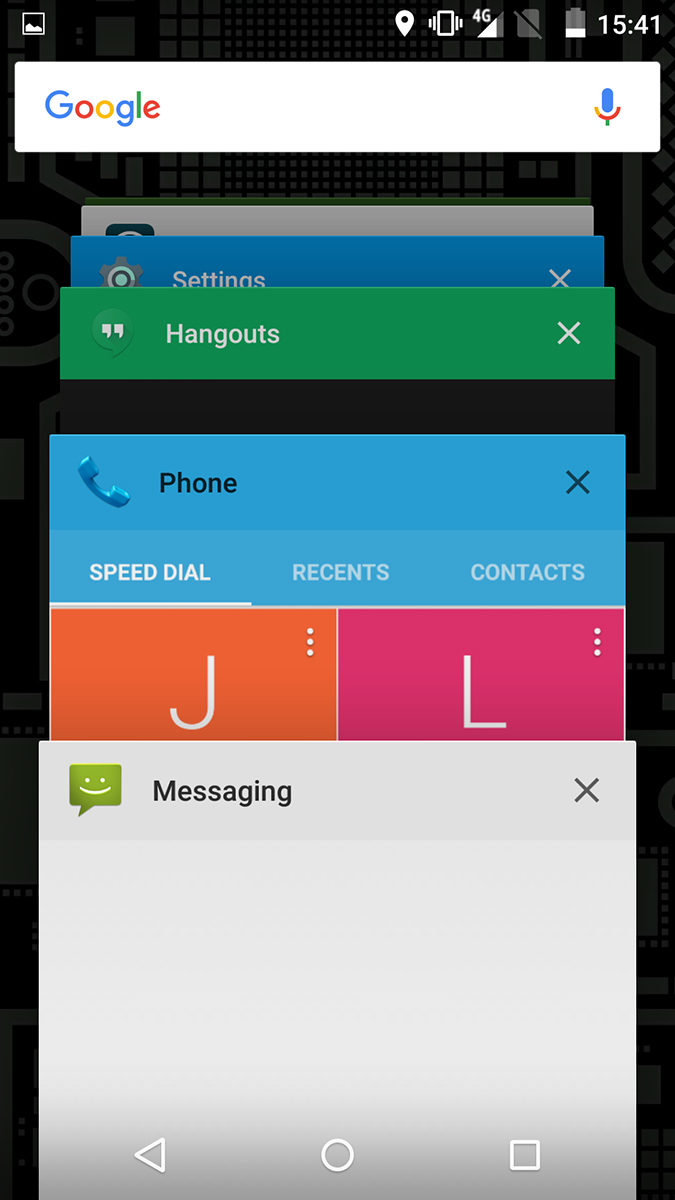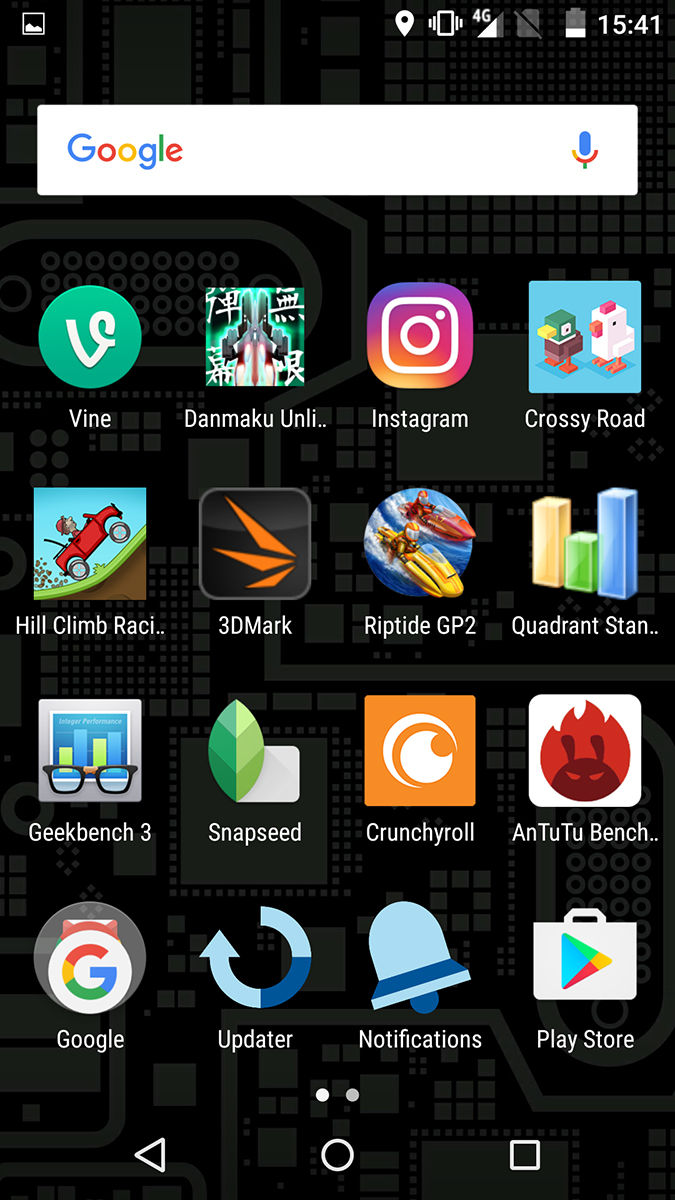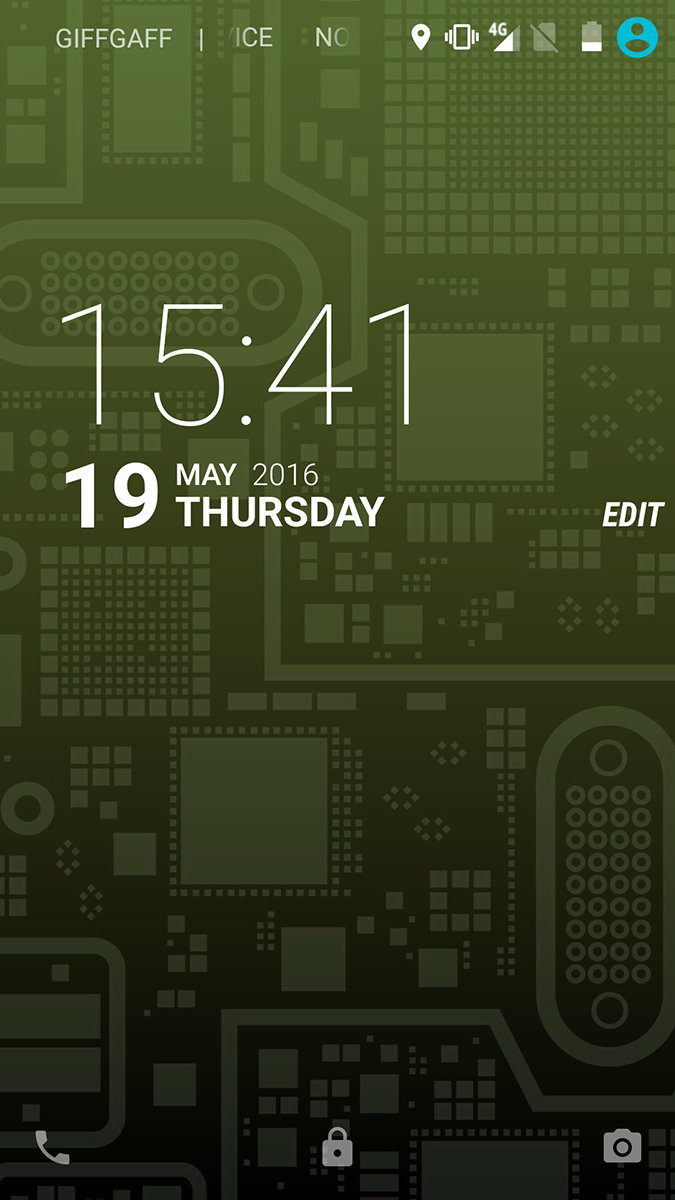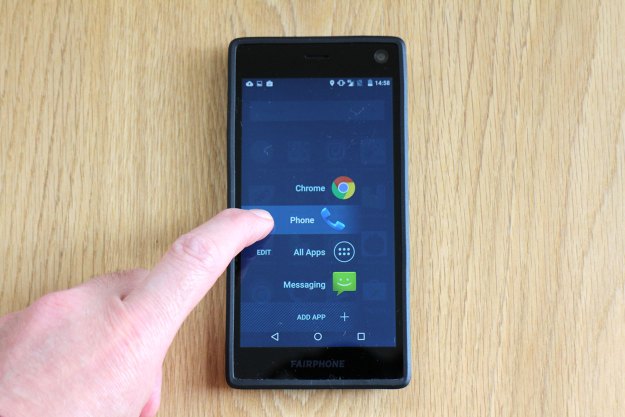
“Fairphone 2 is the most ethical phone you can buy, but it’s far from the best.”
- Ethically and responsibly made
- Easy to repair
- Removable battery
- Limited 4G LTE connectivity
- No software updates yet
- Frustrating UI components
- Expensive
As responsible members of society, we recycle our plastics, pay carbon tax, choose cars with lower emissions, and swap old light bulbs for new, more energy efficient ones. Elsewhere, we campaign for human rights to ensure workers around the world making the products we use are treated well. There are many ways to lessen our impact on the environment, and to minimize the ugly side of our commercial lust, but we can always do more.
The Fairphone 2 is an example of going one step further. It’s made to last for five years, unlike the year or two we’d expect a smartphone to last. This is thanks to a modular body with easily replaceable components. Better than that, though, the minerals used internally have been sourced responsibly. The phone makes better use of recycled materials, and shuns paintwork and special coatings, reducing environmental impact when the time comes for it to be retired.
Those are genuine reasons to choose the Fairphone 2 over any other smartphone, but due to the sheer amount of time we use our phone, it cannot be the only one. To use a phone every day for several years, it needs to function properly, handle everyday tasks with ease, play awesome games, take good pictures, and realistically continue doing the same right up to the year 2019, if it’s going to meet its promise. Fairphone wants you to keep using it, and not discard it in 12 months time, remember. That’s a tall order for even the absolute best phones ever put on sale, made by manufacturers with years of experience. Is it impossible, or has Fairphone defied the odds?
A modular design
The Fairphone 2 isn’t an iPhone clone, or really a clone of any other smartphone that may catch your eye in a store. It’s an innocuous, mostly featureless, slab that looks more like one of the first cheap smartphones we may have purchased back in 2011. It’s not ugly, but is bland and quite thick. Still, it has some appeal, and we love the opaque body shell that reveals the inner workings of the phone.
It’s made of a thick plastic that has plenty of grip, helped by the rubber side panels that extend over the sides of the display. Buttons are covered in chunky plastic, and aren’t very pleasant to feel; there’s a Micro USB charging port on the bottom and a headphone jack up top. The whole thing looks and feels remarkably tough, and there’s absolutely no need to put it in a case, or to worry about setting it face down on a table. The Fairphone 2 gives the impression it will withstand more than a few knocks.
However, let’s say you accidentally dropped it and smashed the screen to pieces. Normally, this would mean an expensive repair bill in the hundreds of dollars, and probably entail handing your phone over to someone technically competent enough to replace it, thus losing it for a day or so. Not so for the Fairphone 2. The screen (which is a single item containing the LCD and glass panel) is easily replaceable yourself, and you can buy one from Fairphone right now for less than £100.
Rip off the plastic body shell, take out the battery, locate two blue clips on the base of the device, unlock them and free the screen from its mountings. Take it off, slide the new one on, lock the clips, and that’s it. Replacing the screen is a five-minute job, performed without any tools at all. Don’t stop there, either. Grab a small screwdriver and find all the blue-marked screws on the body. Undo them and you can strip the phone right down, almost to individual components.
You probably won’t want to take the Fairphone apart very often, but it’s a feature that is absent from the only other modular phone you can by at the moment, the LG G5. Google’s still unreleased Project Ara is the only phone that (most likely) will come close, but you cannot actually buy one yet. The screen and the battery are the least reliable and most easily broken parts of a phone, and swapping them out does increase the life expectancy of the Fairphone 2.
It isn’t all easy, though. The rubber lip around the case is a complete pain, usually refusing to wrap itself around the screen without some cursing and at least one broken nail. The display itself attracts a lot of smears and fingerprints, and with all the modularity comes the chance of breaking or losing little parts, leading to other problems. And again, as much as we admire the Fairphone 2 for its modularity and ethical creation, it’s still a pig to look at.
It already runs outdated Android software
The Fairphone 2 runs Android, an operating system that should still be around and supported in 2019, when you’re ready to buy a new phone. It’ll probably still be perfectly usable, provided the phone has had regular software updates to keep it secure and current. That is, of course, a moon-sized ‘IF.’ We can already hear the snickers at the back, because software updates are not a strong point of Android. And the Fairphone 2 is off to a bad start.
Android 5.1 Lollipop is installed on our test device, which has been replaced once already, and is almost certain to be replaced again by late 2016. This doesn’t mean the Fairphone 2 will never get a software update, but we are concerned.
Fairphone hasn’t messed around with the software too much, but the changes it has made are pointless and annoying. The most irritating is a slide-in shortcut menu, which is activated by swiping left from the display edge. It is way too sensitive and pops up even if you just want to slide to the next home screen. Worse still, the shortcuts are accessed with another left swipe, so if you’re fast, you open the shortcut screen and are straight into an app you didn’t want to open. I lost count of how many times the damn messaging app appeared when all I wanted was the next home screen.
Swiping through home screens is common too, because Fairphone has removed the app drawer. It’s actually hidden on another shortcut screen, normally populated with the most used apps (the stupid messaging app was always top on mine, despite never actually using it) and a recent app list. Finally, a right swipe on the first home screen shows a list of the people you contact most.
On a more positive note, the Fairphone 2 was stable and fast, although there were a few stutters when quickly moving through open apps. It is possible to delete those annoying shortcut screens from the phone, or even choose a different operating system completely. A Fairphone 2-specific build of Jolla’s Sailfish OS exists, for example.
That is fine for the more confident owner, but most will want to stick with Android and enjoy access to Google Play, and we’re cautious about what that means for the future if Fairphone isn’t timely with software updates.
Mediocre specs
The Fairphone 2 has a Snapdragon 801 processor inside with 2GB of RAM, which would have been considered close to top of the line around 18 months ago. This year, such specs are common on mid-range phones. It’s reasonable to expect the phone to perform well, and we weren’t disappointed. The Fairphone 2 managed to play our favorite games, blast through social networking tasks, and browse the web without too many problems.
Fairphone 2 is the most ethical phone you can buy, but it’s far from the best.
Those that did arise were frustrating. Playing bullet-hell shooter Danmaku Unlimited in HD on normal mode didn’t show any slowdown, which is excellent news, but there were times where the screen failed to recognize movement. It wasn’t for long, but enough to notice. If you turn the graphics up to full on Riptide GP2, and the frame rate drops substantially. It’s not unplayable, and seems to even out well when you set the graphics at about 60 percent. However, like the screen issues in Danmaku Unlimited, the phone didn’t always respond quickly to movement — which is used to steer your jet ski — so progress was hampered.
Other reviews have noted screen sensitivity problems, which have sometimes been cured by reattaching the screen after removal, or making sure it is securely in place. Problems still occurred, but only occasionally, after rechecking the screen’s fitment.
AnTuTu’s benchmark score was just over 49,000, a long way off the OnePlus 2’s 72,000, and the Galaxy S7’s whopping 135,000. Give it to Geekbench 3, and the multi-core score is 2656, with a single core of 953. These beat the Moto G 3rd generation and the Oppo F1, other mid-range phones available at a third of the Fairphone 2’s cost.
Camera
There’s nothing special here, if you’re used to reading smartphone spec sheets, because the Fairphone 2 has an 8-megapixel rear camera and a 5-megapixel selfie camera. It’s all controlled by Google’s own Camera app, so you have Photo Sphere, Lens Blur, and Panorama modes. It’s not fast, but it’s manageable enough, and the results are on the better side of average.
Shooting indoor produced pictures with good detail, and the f/2.2 aperture lens made the best use of available light while outdoors on a wonderfully sunny day. The Fairphone 2 took shots we were pleased to look back through later on. There’s nothing remarkable about the camera, and with the HDR mode activated, the pictures it took looked good on the phone.
Fairphone 2 is not comparable to cameras fitted to the best smartphones available now, such as the Galaxy S7 or the LG G5. It’s not on a par with the OnePlus 2 either, which benefits from a manual mode and laser autofocus.
Battery, screen, connectivity, and memory
If you’re sick of massive phones, the Fairphone 2 will be a pleasant surprise. The 5-inch screen means the whole device is very compact, despite the thick body, and it’s extremely manageable in the hand. The 1,920 x 1,080 pixel resolution, like the rest of the phone’s spec, is acceptable. The relatively small screen size matches well with the resolution, meaning it’s sharp to look at, and video isn’t a problem. Under the rear cover is a MicroSD card slot to boost the 32GB of internal memory, helping the device’s longevity.
We love the opaque body shell that reveals the inner workings of the phone.
Sensibly, the Fairphone 2 connects to 4G LTE networks, plus there’s space for two SIM cards, but there’s a problem. This isn’t a world phone, meaning its 4G LTE band support is limited to band 3, 7, and 20. If you’re in the U.K. or Europe it will work great, but it is utterly useless if you want 4G LTE in America. Building wide band support into phones is an expensive, complex process, and such a feature may not be a prerequisite for all owners.
In the United States, it will only connect to 3G networks, which is sad because this is a phone we’re supposed to be keeping for longer than usual, and therefore it should be as practical, useful, and versatile as possible. In terms of connectivity, it is not. But, what if Fariphone made a new module that supports international LTE bands? Another what-if.
The battery’s capacity is 2,420mAh, and we got a maximum of two days from it with average use. The battery wasn’t a fan of long gaming sessions, and after the usual hard early days of testing, it died at the end of a day. The phone doesn’t come with a charger of its own, forcing you to reuse a Micro USB charger you inevitably have lying around at home.
Where can you buy it?
The Fairphone 2 is only for sale in Europe at the moment — a wise move given the connectivity restrictions — where it costs just under 530 euros, or about $590. It’s a lot of money for the phone, but interestingly, Fairphone is very transparent about how it comes up with this price. You can see a complete breakdown of how much the phone ultimately costs here.
In the U.K., it’s sold on Pay As You Go or with a £25 minimum monthly contract through The Phone Co-op, a customer-owned mobile service provider that has partnered with Fairphone. The two companies share a similar ethos, regarding openness and fair business practices.
There’s a two-year warranty with each Fairphone 2 that covers everything except the battery, which is covered for a year. The phone will have to be sent back for repair or replacement, and the company will not honor the warranty if the phone is mistreated, dropped in water, or abused.
Conclusion
It’s impossible not to admire what Fairphone is doing. From its transparency in business to the ethical supply chain, the company is forging a path that’s almost unique in the smartphone industry, and one other manufacturers should follow. Anyone concerned with our impact on the rest of the world, and keen to support companies that are dedicated to making positive ecological changes will want to buy the Fairphone 2.
If that’s you, go into it with your eyes wide open. Here’s what you’re in for: regardless of what Fairphone says, we cannot see how this phone will last two years time, let alone the promised five. The software is already two years out of date, the lack of international connectivity is frustrating, and the middling processor specs will not last a few more years.
Fairphone 2 is expensive, which we should expect given the extra work involved in its creation, but we’d rather pay more for a powerful phone than be limited to average performance that will dwindle in a year or two, annoying you to the point of upgrade before long.




